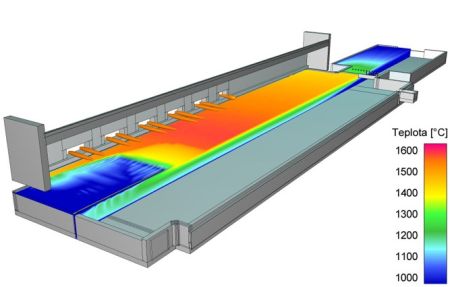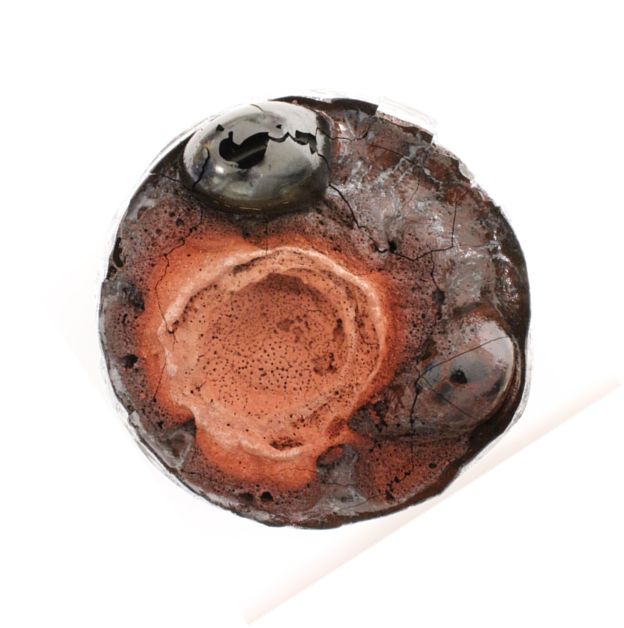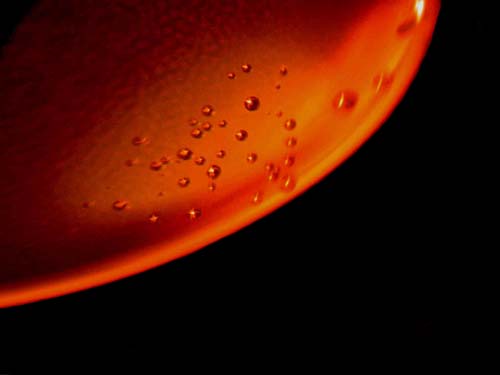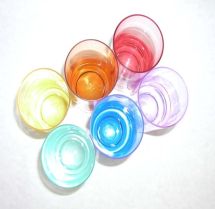stdClass Object
(
[nazev] => Laboratory of Inorganic Materials
[adresa_url] =>
[api_hash] =>
[seo_desc] =>
[jazyk] =>
[jednojazycny] =>
[barva] => cervena
[indexace] => 1
[obrazek] =>
[ga_force] =>
[cookie_force] =>
[secureredirect] =>
[google_verification] =>
[ga_account] =>
[ga_domain] =>
[ga4_account] => G-VKDBFLKL51
[gtm_id] =>
[gt_code] =>
[kontrola_pred] =>
[omezeni] => 0
[pozadi1] => 6_0868.jpg
[pozadi2] =>
[pozadi3] =>
[pozadi4] =>
[pozadi5] =>
[robots] =>
[htmlheaders] =>
[newurl_domain] => 'lam.vscht.cz'
[newurl_jazyk] => 'en'
[newurl_akce] => '[en]'
[newurl_iduzel] =>
[newurl_path] => 8548/20508/20510
[newurl_path_link] => Odkaz na newurlCMS
[iduzel] => 20510
[platne_od] => 31.10.2023 17:03:00
[zmeneno_cas] => 31.10.2023 17:03:56.393301
[zmeneno_uzivatel_jmeno] => Jan Kříž
[canonical_url] =>
[idvazba] => 25426
[cms_time] => 1713892385
[skupina_www] => Array
(
)
[slovnik] => stdClass Object
(
[logo_href] => /
[logo] =>  [logo_mobile_href] => /
[logo_mobile] =>
[logo_mobile_href] => /
[logo_mobile] =>  [google_search] => 001523547858480163194:u-cbn29rzve
[social_fb_odkaz] =>
[social_tw_odkaz] =>
[social_yt_odkaz] =>
[intranet_odkaz] => http://intranet.vscht.cz/
[intranet_text] => Intranet
[mobile_over_nadpis_menu] => Menu
[mobile_over_nadpis_search] => Search
[mobile_over_nadpis_jazyky] => Languages
[mobile_over_nadpis_login] => Login
[menu_home] => Homepage
[drobecky] => You are here: VŠCHT Praha – FCHT – Laboratory of Inorganic Materials
[aktualizovano] => Updated
[autor] => Author
[paticka_budova_a_nadpis] => BUILDING A
[paticka_budova_a_popis] => Rector,
Department of Communications,
Department of Education,
FCT Dean’s Office,
Centre for Information Services
[paticka_budova_b_nadpis] => BUILDING B
[paticka_budova_b_popis] => Department of R&D, Dean’s Offices:
FET,
FFBT,
FCE,
Computer Centre,
Department of International Relations,
Bursar
[paticka_budova_c_nadpis] => BUILDING C
[paticka_budova_c_popis] => Crèche Zkumavka,
General Practitioner,
Department of Economics and Management,
Department of Mathematics
[paticka_budova_1_nadpis] => NATIONAL LIBRARY OF TECHNOLOGY
[paticka_budova_1_popis] =>
[paticka_budova_2_nadpis] => CAFÉ CARBON
[paticka_budova_2_popis] =>
[paticka_adresa] => Laboratory of Inorganic Materials
Joint Workplace of The UCT Prague and The Institute of Rock Structure and Mechanics, v.v.i.
[google_search] => 001523547858480163194:u-cbn29rzve
[social_fb_odkaz] =>
[social_tw_odkaz] =>
[social_yt_odkaz] =>
[intranet_odkaz] => http://intranet.vscht.cz/
[intranet_text] => Intranet
[mobile_over_nadpis_menu] => Menu
[mobile_over_nadpis_search] => Search
[mobile_over_nadpis_jazyky] => Languages
[mobile_over_nadpis_login] => Login
[menu_home] => Homepage
[drobecky] => You are here: VŠCHT Praha – FCHT – Laboratory of Inorganic Materials
[aktualizovano] => Updated
[autor] => Author
[paticka_budova_a_nadpis] => BUILDING A
[paticka_budova_a_popis] => Rector,
Department of Communications,
Department of Education,
FCT Dean’s Office,
Centre for Information Services
[paticka_budova_b_nadpis] => BUILDING B
[paticka_budova_b_popis] => Department of R&D, Dean’s Offices:
FET,
FFBT,
FCE,
Computer Centre,
Department of International Relations,
Bursar
[paticka_budova_c_nadpis] => BUILDING C
[paticka_budova_c_popis] => Crèche Zkumavka,
General Practitioner,
Department of Economics and Management,
Department of Mathematics
[paticka_budova_1_nadpis] => NATIONAL LIBRARY OF TECHNOLOGY
[paticka_budova_1_popis] =>
[paticka_budova_2_nadpis] => CAFÉ CARBON
[paticka_budova_2_popis] =>
[paticka_adresa] => Laboratory of Inorganic Materials
Joint Workplace of The UCT Prague and The Institute of Rock Structure and Mechanics, v.v.i.
Technická 5
166 28 Prague 6 – Dejvice
IČO: 60461373 / VAT: CZ60461373
Czech Post certified digital mail code: sp4j9ch
Copyright: UCT Prague 2015
Technical support by the Computing Centre.
[paticka_odkaz_mail] => mailto:Vladislava.Tonarova@vscht.cz
[zobraz_desktop_verzi] => switch to desktop version
[social_fb_title] =>
[social_tw_title] =>
[social_yt_title] =>
[zobraz_mobilni_verzi] => switch to mobile version
[paticka_mapa_odkaz] =>
[nepodporovany_prohlizec] => For full access, please use different browser.
[preloader] => Wait a second...
[social_in_odkaz] =>
[social_li_odkaz] =>
)
[poduzel] => stdClass Object
(
[20558] => stdClass Object
(
[obsah] =>
[poduzel] => stdClass Object
(
[20560] => stdClass Object
(
[obsah] =>
[iduzel] => 20560
[canonical_url] => //lam.vscht.cz
[skupina_www] => Array
(
)
[url] =>
[sablona] => stdClass Object
(
[class] =>
[html] =>
[css] =>
[js] =>
[autonomni] =>
)
)
[20561] => stdClass Object
(
[obsah] =>
[iduzel] => 20561
[canonical_url] => //lam.vscht.cz
[skupina_www] => Array
(
)
[url] =>
[sablona] => stdClass Object
(
[class] =>
[html] =>
[css] =>
[js] =>
[autonomni] =>
)
)
[20562] => stdClass Object
(
[obsah] =>
[iduzel] => 20562
[canonical_url] => //lam.vscht.cz
[skupina_www] => Array
(
)
[url] =>
[sablona] => stdClass Object
(
[class] =>
[html] =>
[css] =>
[js] =>
[autonomni] =>
)
)
)
[iduzel] => 20558
[canonical_url] =>
[skupina_www] => Array
(
)
[url] =>
[sablona] => stdClass Object
(
[class] =>
[html] =>
[css] =>
[js] =>
[autonomni] =>
)
)
[20559] => stdClass Object
(
[obsah] =>
[poduzel] => stdClass Object
(
[20563] => stdClass Object
(
[nazev] =>
[seo_title] => Laboratory of Inorganic Materials
[seo_desc] =>
[autor] =>
[autor_email] =>
[obsah] =>
|
Laboratory of Inorganic Materials is joint working place of the University of Chemistry and Technology Prague and the Institute of rock structure and mechanics ASCR, v.v.i. Laboratory activity evenly covers the area of education and both basic and applied research.
|
Melting space for the vitrification of radioactive materials |
|
|
For students
|
| Bubble in glass containig Na2SO4 condensate |
|
Laboratory members are involved in the education within bachelor and master study programs Chemistry and Materials. Doctoral students of the study program Chemistry and Technology of Inorganic Materials work closely with us when assisting solved research projects, completing required coursework and writing and defending a dissertation about their research project. |
|
 |
|
| The result of the mathematical model of the flow in the melting chamber - sectional view showing the formation of spiral flow, which allows to increase the efficiency of the melting process. |
Image analysis - measurement of the size of a bubble in the melt. |
Laboratory of Inorganic Materials was created from the original Laboratory for chemistry and technology of silicates and ICT Prague and ASCR founded in 1961. In 2012, the Laboratory was transformed into a Joint workplace of the University of Chemistry and Technology Prague UCT Prague) and the Institute of Rock Structure and Mechanics ASCR, v.v.i. The Laboratory cooperates with materials-oriented UCT Prague departments, especially the Department of glass and ceramics. In addition to the labs in UCT Prague (Building A, Room A04), we also work at the Institute of Rock Structure and Mechanics ASCR v.v.i., V Holešovičkách 41, 180 00 Prague 8.

Temperature distribution on the top melt level in a glass melting space
Postgraduate study programme: Chemistry and Technology of Materials
Field of study: Chemistry and technology of inorganic materials
Themes of the postgraduate studies
Supervisor: Prof. Ing. Lubomír Němec, DrSc.
|
Supervisor: Doc. Ing. Jaroslav Kloužek, CSc.
|
Supervisor: Doc. Ing. Jaroslav Kloužek, CSc. |
Supervisor: Prof. Ing. Lubomír Němec, DrSc.
|
Research areas |
Glass melting processes and their modelling |
New glass melting concepts |
|||
|
|
Mathematical modeling is traditional tool for the analysis of glass melting process. CFD methods calculate velocity and temperature fiels ... |
 |
New relative value – space utilization – quantitatively assesses melting processes in continuous melting space. The current industrial furnaces... | |
Development of new types of glasses |
Materials for photonics and optoelectronics |
|||
|
|
The composition of the proposed glass is optimized in terms of the required properties. Colors affected by the redox state of the glass can be predicted ... |
|
The industrial development is coming with a requirement of new materials. In optic and optoelectronic ... |
|
Research of processes for vitrification of nuclear waste |
||||
 |
Solving the problem of immobilizing a large amount of nuclear waste coming from the production of plutonium is the actual question ... | |||
Experimental techniques
|
|
|
UCT Prague |
IRSM ASCR, v.v.i. |
|
University of Chemistry and Technology Prague Laboratory of Inorganic Materials Technická 5 166 28 Prague 6 Czech Republic
Tel. +420 22044 5192 (l. 4318, 5195) E-mail: Jaroslav.Klouzek@vscht.cz |
Institute of Rock Structure and Mechanics ASCR, v.v.i. Laboratory of Inorganic Materials V Holešovičkách 41 180 00 Prague 8 Czech Republic
Tel. +420 266009 421 (l. 423) |
|
Public transportation: |
Public transportation: Metro Line "C" to Holešovice station, exit to Kobylisy, Prosek, then by bus 102, 210 to Vychovatelna station. Metro Line "B" to Palmovka station, exit to Divadlo pod Palmovkou, then by tram 10, 24, 25 to Vychovatelna station. |
DATA
stdClass Object
(
[nazev] => Staff
[seo_title] => Staff
[seo_desc] =>
[autor] =>
[autor_email] =>
[obsah] =>
Head of the Department
Deputy Head
| Ing. Marcela Jebavá, Ph.D. |
Secretary
| Jana Hurníková |
Researchers
|
Prof. Ing. Lubomír Němec, DrSc. |
|
| Ing. Vladislava Tonarová, Ph.D. | |
| Ing. Miroslava Vernerová, Ph.D. |
PhD. Students
|
Ing. Lukáš Hrbek |
|
Ing. Petra Kocourková |
| E-mail: | richard.pokorny@vscht.cz |
|
Phone: |
+420 220 44 4318 |
| Room: |
A 04 |
| Scholar | |
| Scopus | |
| ORCID |
Research
Richard is a head of the vitrification group at the University of Chemistry and Technology in Prague, Czech Republic. He specializes in the development of mathematical models for both fundamental and applied research. In recent years, he co-leads the development of the mathematical model of a cold cap, which will be used in support of the Waste Treatment and Immobilization Plant, currently built at Hanford, Washington, USA. Richard is interested in all kinds of problems related to batch-to-glass conversion and melter modeling.
Occupation and employer
- 02/2016 – today: Researcher/Principal Investigator at UCT Prague, Faculty of Chemical Technology. Established a new research group in the field of glass science
- 2010 – 2015: Research Associate (2010 – 2011) / Contractor (2011 – 2015) at Pacific Northwest National Laboratory, Richland, Washington, USA, Project: Mathematical Modeling of Cold Cap during Vitrification of Nuclear Waste.
Education
- 2011-2016: UCT Prague, Faculty of Chemical Engineering, PhD studies in Mathematical Modeling in Chemical Engineering, PhD thesis: "Modeling of structure-property relationships in hetero-phase materials"
- 2005-2010: UCT Prague, Faculty of Chemical Engineering, Bachelor and Master’s Degree in Chemical Engineering, Bioengineering and Modeling of Processes.
Current projects
- The Ministry of Education, Youth and Sports of the Czech Republic, program Inter-Excellence – Inter-Action II, USA, č. LUAUS23062: Experimental and mathematical analysis of primary glass-forming melt properties, gas evolution, and their relation with primary foam production. (2023 – 2026)
- Battelle Energy Alliance, LLC, Idaho, USA, Contract No. 166789: Mathematical Modeling and Experimental Evaluation of Melter Cold Cap for Nuclear Waste Vitrification (2016-2024)
Past projects
- The Ministry of Education, Youth and Sports of the Czech Republic, program Inter-Excellence – Inter-Action, USA, č. LTAUSA18075: Analysis of Foaming – Critical Batch-to-Glass Conversion Process. (2019 – 2022)
- GACR, project No. 19-14179S: In-situ analysis of foam layer behavior at the batch-melt interface using laboratory-scale melter vessel (2019 - 2021)
- Battelle Energy Alliance, LLC, Idaho, USA, Contract No. 206349: Batch-to-Glass Conversion and Chemical Durability of Glass for Vitrification of Low Activity Waste (2018-2019)
Other area of interest
- 2011 (04-06), 2012 (05-06), 2013 (04-05): Visiting researcher at the Division of Advanced Nuclear Engineering, Pohang University of Science and Technology, South Korea (Project: Mathematical modeling of fundamental processes affecting the melting rate in electric glass melters. Description: Three consecutive Ph.D. internships at the Division of Advanced Nuclear Engineering under the “World Class University Programme”.)
Recent Publications
- Kunc J., Kloužek J., Vernerová M., Cincibusová P., Ferkl P., Hall M., Eaton W., Hrma P., Guillen D., Kruger A., Pokorný R. (2023): Effect of feed composition on the production of off-gases during vitrification of simulated low-activity nuclear waste. Progress in Nuclear Energy. 166, 104932. doi: 10.1016/j.pnucene.2023.104932
- Ferkl P., Hrma P., Kloužek J., Kruger A., Pokorný R. (2023): Cold-cap structure in a slurry-fed electric melter. International Journal of Applied Glass Science. doi: 10.1111/ijag.16645.
- Pokorný R., Vernerová M., Kloužek J., Cincibusová P., Kohoutková M., Pezl R., Ferkl P., Hrma P., Podor R., Schuller S.,Kruger A. (2023): Transient Melt Formation and its Effect on Conversion Phenomena during Nuclear Waste Vitrification – HT-ESEM Analysis. Journal of the American Ceramic Society. doi: 10.1111/jace.19361
- Ferkl P., Hrma P., Klouzek J., Kruger A., Pokorny R. (2023): Effect of material properties on batch-to-glass conversion kinetics. International Journal of Applied Glass Science. doi: 10.1111/ijag.16631
- Rigby J.C., Dixon D.R., Kloužek J., Pokorný R., Thompson P.B.J., Scrimshire A., Kruger A.A., Bell A.M.T., Bingham P.A. (2023): Alternative reductants for foam control during vitrification of high-iron High Level Waste (HLW) feeds. Journal of Non-Crystalline Solids. 608, 122240. doi: 10.1016/j.jnoncrysol.2023.122240
- Ferkl P., Hrma P., Abboud A., Guillen D., Vernerová M., Kloužek J., Hall M., Kruger A., Pokorny R. (2023): Conversion degree and heat transfer in the cold cap and their effect on glass production rate in an electric melter. International Journal of Applied Glass Science. doi: 10.1111/ijag.16615
- Marcial J., Cicconi M., Pearce C., Klouzek J., Neeway J., Pokorny R., Vernerova M., McCloy J., Nienhuis E., Sjoblom R., Weaver J., Hand R., Hrma P., Neuville D., Kruger A. (2023): Effect of network connectivity on behavior of synthetic Broborg Hillfort glasses. Journal of the American Ceramic Society. 106, 1716. doi: 10.1111/jace.18778
- Khawand J., Kloužek J., Vernerová M., Cincibusová P., Hrma P., Kruger A., Pokorný R. (2023): Effect of Sucrose on the Oxidation-Reduction Conditions and Retention of Rhenium during Vitrification of Low-Activity Waste. Journal of Nuclear Materials. 573, 154155. doi: 10.1016/j.jnucmat.2022.154155.
2022
- Rigby J., Dixon D., Cutforth D., Marcial J., Klouzek J., Pokorny R., Kruger A., Scrimshire A., Bell M., Bingham P. (2022): Melting behaviour of simulated radioactive waste as functions of different redox iron-bearing raw materials. Journal of Nuclear Materials. 569, 153946. doi: 10.1016/j.jnucmat.2022.153946
- Marcial J., George J., Ferkl P., Pokorny R., Kissinger R., Crum J., Klouzek J., Hrma P., Kruger A., (2022): Elemental mapping and iron oxidation state measurement of synthetic low-activity waste feeds. Journal of Non-Crystalline Solids. 591, 121725. doi: 10.1016/j.jnoncrysol.2022.121725
- Ferkl P., Hrma P., Abboud A., Guillen D., Khawand J., Kopal I., Kohoutková M., Vernerová M., Kloužek J., Hall M., Kruger A., Pokorný R. (2022): Conversion kinetics during melting of simulated nuclear waste glass feeds measured by dissolution of silica. Journal of Non-Crystalline Solids. 579, 121363. doi: 10.1016/j.jnoncrysol.2021.121363
- Marcial J., Luksic S., Klouzek J., Vernerova M., Cutforth D., Varga T., Hrma P., Kruger A., Pokorny R. (2022): In-situ x-ray and visual observation of foam morphology and behavior at the batch-melt interface during melting of simulated waste glass. Ceramics International. 48, 7975-7985. doi: 10.1016/j.ceramint.2021.11.344
- Marcial J., Kloužek J., Vernerová M, Ferkl P., Lee S., Cutforth D., Hrma P., Kruger A., Pokorný R. (2022): Effect of Al and Fe sources on conversion of high-level nuclear waste feed to glass. Journal of Nuclear Materials. 559, 153423. doi: 10.1016/j.jnucmat.2021.153423
2021
- Kloužek J., Cincibusová P., Vernerová M., Hrma P., Pokorný R. (2021): Visual observation of foaming at the batch-melt interface during melting of soda-lime-silica glass. Ceramics-Silikaty 65, 410-416. doi: 10.13168/cs.2021.0044
- Ferkl P., Hrma P., Kloužek J., Vernerová M., Kruger A., Pokorný R. (2021): Model for batch-to-glass conversion: Coupling the heat transfer with conversion kinetics. Journal of Asian Ceramic Societies. 9, 652-664. doi: 10.1080/21870764.2021.1907914
- Lee S., Cutforth D., Mar D., Klouzek J., Ferkl P., Dixon D., Pokorny R., Hall M., Eaton W., Hrma P., Kruger A. (2021): Melting rate correlation with batch properties and melter operating conditions during conversion of nuclear waste melter feeds to glasses. International Journal of Applied Glass Science. 12, 398-414. doi: 10.1111/ijag.15911
- Luksic S., Pokorny R., Hrma P., Varga T., Rivers E., Buchko A., Klouzek J., Kruger A. (2021): Through a glass darkly: In-situ x-ray computed tomography imaging of feed melting in continuously fed laboratory-scale glass melter. Ceramics International. 47, 15807-15818. doi: 10.1016/j.ceramint.2021.02.153
- Abboud A., Guillen D., Hrma P., Kruger A., Klouzek J., Pokorny R. (2021): Heat Transfer from Glass Melt to Cold Cap: Computational Fluid Dyamics Study of Cavities beneath Cold Cap. International Journal of Applied Glass Science. 12, 233-244. doi: 10.1111/ijag.15863
- Marcial J., Pokorný R., Kloužek J., Vernerová M., Lee S., Hrma P., Kruger A. (2021): Effect of water vapor and thermal history on nuclear waste feed conversion to glass. International Journal of Applied Glass Science. 12, 145-157. doi: 10.1111/ijag.15803
- Ueda N., Vernerová M., Kloužek J., Ferkl P., Hrma P., Yano T., Pokorný R. (2021): Conversion kinetics of container glass batch melting. 103, 34-44. Journal of the American Ceramic Society. doi: 10.1111/jace.17406
- Lee S., Ferkl P., Pokorny R., Klouzek J., Hrma P., Eaton W., Kruger A. (2020): Simplified melting rate correlation for radioactive waste vitrification in electric furnaces. Journal of the American Ceramic Society. 103, 5573-5578. doi: 10.1111/jace.17281
- Luksic S., Pokorny R., Jaime G., Hrma P., Varga T., Reno L., Buchko A., Kruger A. (2020). In situ characterization of foam morphology during melting of simulated waste glass using x-ray computed tomography. Ceramics International. 46, 17176-17185. doi: 10.1016/j.ceramint.2020.02.215
- Abboud A.W., Guillen D.P., Pokorny R. (2020): Effect of Cold Cap Coverage and Emissivity on the Plenum Temperature in a Pilot‐Scale Waste Vitrification Melter. International Journal of Applied Glass Science. doi: 10.1111/ijag.15031
- Hujova M., Klouzek J., Cutforth, D., Lee S., Miller M., Kruger A., Hrma P., Pokorny R. (2020): Feed-to-glass conversion during low activity waste vitrification. Ceramics International. doi: 10.1016/j.ceramint.2019.12.256
- Guillen D.P., Lee S., Hrma P., Traverso J., Pokorny R., Klouzek J., Kruger A.A. (2020): Evolution of Chromium, Manganese and Iron Oxidation State during Conversion of Nuclear Waste Melter Feed to Molten Glass. Journal of Non-Crystalline Solids. doi: 10.1016/j.
jnoncrysol.2019.119860 - Lee S., McCarthy B., Hrma P., Chun J., Pokorny R., Klouzek J, Kruger A. (2020): Viscosity of glass-forming melt at the bottom of high-level waste melter-feed cold caps: effects of temperature and incorporation of solid components. Journal of the American Ceramic Society. 103, 1615-1630. doi: 10.1111/jace.16876
- Pokorny R., Hrma P., Lee S., Klouzek J., Choudhary M., Kruger A. (2020): Modeling batch melting: Roles of heat transfer and reaction kinetics. Journal of the American Ceramic Society. 103, 701-718. doi: 10.1111/jace.16898
- Goel A., McCloy J.S., Pokorny R., Kruger A.A. (2019): Challenges with vitrification of Hanford High-Level Waste (HLW) to borosilicate glass – An overview. Journal of Non-Crystalline Solids: X. doi: 10.1016/j.nocx.2019.100033
- Appel C.J., Klouzek J., N.J., Lee S., Dixon D.R., Hrma P., Pokorny R., Schweiger M.J., Kruger A.A. (2019): Effect of sucrose on foaming and melting behavior of a low-activity waste melter feed. Journal of the American Ceramic Society. 102, 7594-7605.doi: 10.1111/
jace.16675 - Hrma P., Klouzek J., Pokorny R., Lee S., Kruger A.A. (2019). Heat Transfer from Glass Melt to Cold Cap: Gas Evolution and Foaming. 102, 5853-5865.Journal of the American Ceramic Society. doi: 10.1111/jace.
16484 - Lee S., Hrma P., Pokorny R., Klouzek J., Eaton W., Kruger A.A. (2019). Glass production rate in electric furnaces for radioactive waste vitrification. 102, 5828-5842. Journal of the American Ceramic Society. doi: 10.1111/jace.
16463 - Lee S., Hrma P., Pokorny R., Traverso J.J., Klouzek J., Schweiger M.J.,Kruger A.A. (2019). Heat Transfer from Glass Melt to Cold Cap: Effect of Heating Rate. International Journal of Applied Glass Science. 10, 401-413. doi: 10.1111/ijag.
13104 - Hujova M., Klouzek J., Cutforth D.A., Lee S., Miller M.D., McCarthy B., Hrma P., Kruger A.A., Pokorny R. (2019). Cold-cap formation from a slurry feed during nuclear waste vitrification. Ceramics International. 45, 6405-6412. doi: 10.1016/j.ceramint.2018.12.127
- Hrma P., Pokorny R., Lee S., Kruger A.A. (2019). Heat Transfer from Glass Melt to Cold Cap: Melting Rate Correlation Equation. International Journal of Applied Glass Science. 10, 143-150. doi: 10.1111/ijag.12666
- Guillen D.P., Abboud A.W., Pokorny R., Eaton W.C., Dixon D., Fox K., Kruger A.A. (2018). Validation Hierarchy for Waste Vitrification Models. Transactions of the American Nuclear Society. 118, 1173-1176. Open Access
- Guillen D.P., Abboud A.W., Pokorny R., Eaton W.C., Dixon D., Fox K., Kruger A.A. (2018): Development of a Validation Approach for an Integrated Waste Glass Melter Model. Nuclear Technology. 203, 244-260. doi: 10.1080/00295450.2018.1458559
- McCarthy B.P., George J.L., Dixon D.R., Wheeler M., Cutforth D.A., Hrma P., Linn D., Chun J., Hujova M., Kruger, A.A., Pokorny R. (2018). Rheology of simulated radioactive waste slurry and cold cap during vitrification. Journal of the American Ceramic Society. 101, 5020-5029. doi: 10.1111/jace.15755.
- Hujova M., Pokorny R., Klouzek J., Seungmin L., Traverso J.J., Schweiger M.J., Kruger A.A., Hrma P. (2018). Foaming during Nuclear Waste Melter Feeds Conversion to Glass: Application of Evolved Gas Analysis. International Journal of Applied Glass Science. 9, 487-498. doi: 10.1111/ijag.12353
- Lee S., Hrma P., Pokorny R., Klouzek J., VanderVeer B., Rodriguez C., Chun J., Schweiger M., Kruger A. (2017). Effects of alumina sources (gibbsite, boehmite, and corundum) on melting behavior of high-level radioactive waste melter feed. MRS ADVANCES. 2, 11, 603-608. doi: 10.1557/adv.2016.644
- Lee S., Hrma P., Pokorny R., Klouzek J., VanderVeer B.J., Dixon D.., Luksic S.A., Rodriguez C.P., Chun J., Schweiger M.J., Kruger A.A. (2017). Effect of melter feed foaming on heat flux to the cold cap. Journal of Nuclear Materials. 496, 54-65. doi: 10.1016/j.jnucmat.2017.09.016
- Lee S., Hrma P., Kloužek J., Pokorný R., Hujová M., Dixon D.R., Schweiger M.J., Kruger A.A. (2017): Balance of oxygen throughout the conversion of a high-level waste melter feed to glass. Ceramics International. 43, 13113-
13118. doi: 10.1016/j.ceramint.2017.07.002 - Hujova M., Pokorny R., Klouzek J., Dixon D.R., Cutforth A., Seungmin Lee, McCarthy B.P., Schweiger M.J., Kruger A.A., Hrma P. (2017): Determination of Heat Conductivity of Waste Glass Feed and its Applicability for Modeling the Batch-to-Glass Conversion. Journal of the American Ceramic Society. 100, 5096-5106. doi: 10.1111/jace.15052
- Harris W. H., Guillen D. P., Kloužek J., Pokorný R., Yano T., Lee S.-M., Schweiger M. J., Hrma P. (2017): X-ray tomography of feed-to-glass transition of simulated borosilicate waste glasses. Journal of the American Ceramic Society. 100, 3883–3894. doi: 10.1111/jace.14895
- Lee, S., VanderVeer, B. J., Hrma, P., Hilliard, Z. J., Heilman-Moore, J. S., Bonham, C. C., Pokorny, R., Dixon, D. R., Schweiger, M. J. and Kruger, A. A. (2017). Effects of Heating Rate, Quartz Particle Size, Viscosity, and Form of Glass Additives on High-Level Waste Melter Feed Volume Expansion. Journal of the American Ceramic Society. 100, 583-591. doi:10.1111/jace.1462
Looking for prospective students
Short interview to JIGA project
[iduzel] => 52788 [canonical_url] => [skupina_www] => Array ( ) [url] => [sablona] => stdClass Object ( [class] => infobox [html] => [css] => [js] => [autonomni] => 0 ) ) [52791] => stdClass Object ( [nadpis] => Photogallery [iduzel] => 52791 [canonical_url] => [skupina_www] => Array ( ) [url] => [sablona] => stdClass Object ( [class] => galerie [html] => [css] => [js] => [autonomni] => 0 ) ) ) [iduzel] => 52731 [canonical_url] => [skupina_www] => Array ( ) [url] => /pokorny [sablona] => stdClass Object ( [class] => stranka_obrazek_vertical [html] => [css] => [js] => [autonomni] => 1 ) ) ) [sablona] => stdClass Object ( [class] => stranka [html] => [css] => [js] => [autonomni] => 1 ) [api_suffix] => )





